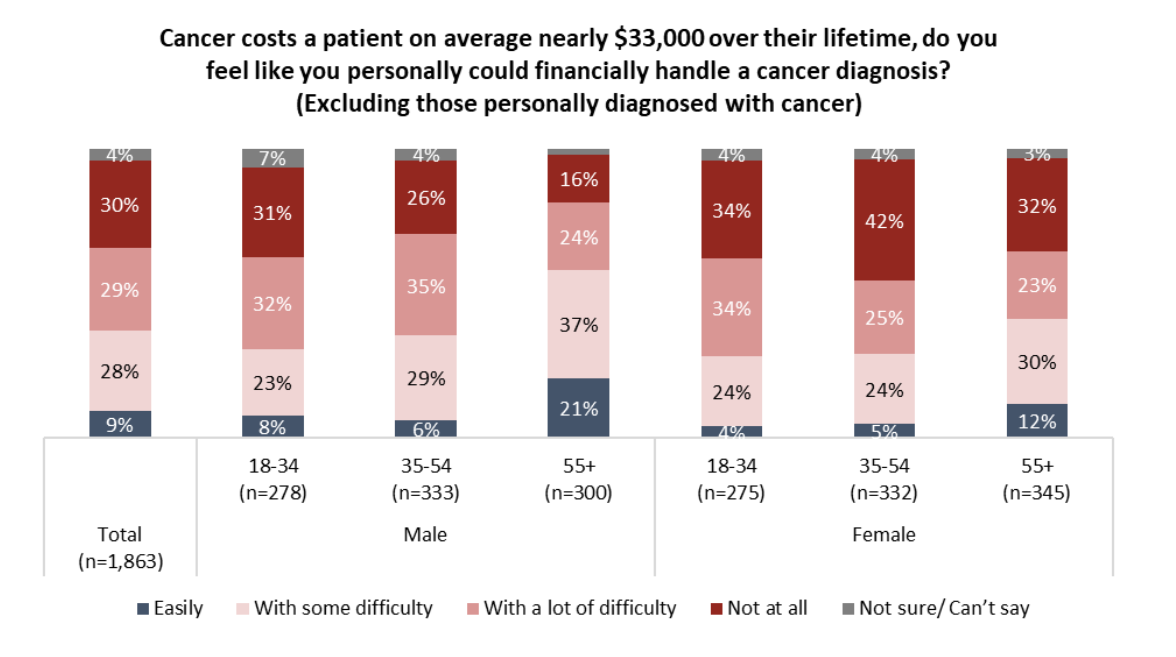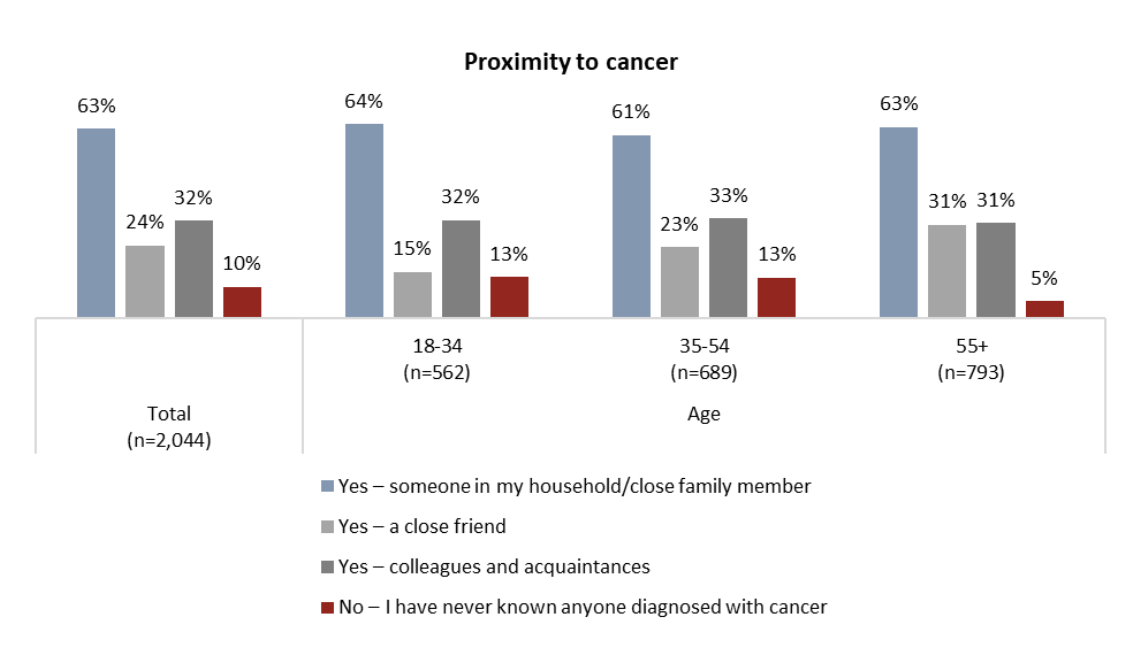
Disease 'takes enough from us – it shouldn't also strip us of our financial future'

With a cancer diagnosis, the long-term impact can be difficult for many working-age Canadians.
This can include heightened concerns about long-term savings and job prospects, according to a report from the Canadian Cancer Society (CCS).
Canadians cited the following financial goals as “difficult” due to out-of-pocket expenses from cancer treatment:
According to a Canadian Cancer Society report released in December 2024, cancer costs the average patient nearly $33,000 in their lifetime. And many Canadians say they could not financially handle a cancer diagnosis, particularly women:

"What this data tells us is that Canadians believe the immediate out-of-pocket costs of a cancer diagnosis would rob them of their ability to plan for their future," says Dr. Stuart Edmonds, executive vice president of Mission, Research and Advocacy at CCS.
"Being forced to put retirement savings and careers on hold to deal with the immediate out-of-pocket costs can have lasting impacts long after the cancer has been treated or cured. Cancer takes enough from us – it shouldn't also strip us of our financial future."
An impact on retirement savings, even in the short term, can have a detrimental effect on Canadians' financial well-being. When polled by the Angus Reid Institute, 48% of working-age Canadians say they worry often or all the time about how they will support themselves in retirement, even without considering the impact of cancer on their financial stability, according to the CCS.
Nearly half (45%) of Canadians are expected to receive a cancer diagnosis in their lifetime, according to the report, citing data from the Canadian Cancer Statistics Dashboard. Also, cancer remains the leading cause of death, accounting for one-quarter of all deaths in a typical year in Canada, according to data from Statistics Canada (StatCan).
Overall, over 6 in 10 Canadians have had someone in their household or a close family member be diagnosed with the disease. This is true across all age groups, Angus Reid and the CCS note.

High-income North America is among the top 5 regions in the world with the most cancer deaths from workplace carcinogens, according to a previous report.
"Understanding the worries of working-age Canadians as well as the experiences of people with proximity to cancer provides government, policy leaders and influential organizations such as the Canadian Cancer Society with the information and data required to take action around what's working, what's not and what needs to happen next," says Shachi Kurl, president, Angus Reid Institute.
Tackling the leading cause of job-related deaths for firefighters in the country, the federal government announced in October 2024 that it is investing $12.29 million to improve the prevention, detection, and treatment of cancers linked to firefighting.
Employers can and should support their employees through cancer, according to Mercer Marsh Benefits, recommending the following:
“As the cancer care landscape rapidly advances, we see evolution in personalized and precision medical treatments, early detection methods and additional practical supports for employees with cancer and their caregivers. Companies globally are recognizing the value of pledging to create a positive workplace environment that supports impacted employees, and of putting in place a consistent set of supports that help to drive Total Well-being,” says Mercer Marsh Benefits.
“At the same time, however, companies will need to make tough choices in their approach to medical benefits globally, answering questions of coverage adequacy and sufficiency while constrained by budget limitations.”